Butterfly

VulcanSpirit
Richard & Alison Brunstrom
Thu 9 Oct 2014 15:34
|
Australia has over 400 species of butterfly (about ten times the UK
number), and Tropical North Queensland has some beauties. Unfortunately because
it’s so hot they have little need to rest so they flit about like butterflies do
everywhere - but faster and without stopping. And many of the most beautiful
live much of their lives in the forest canopy. All in all it’s nearly impossible
to photograph them in the wild, so the crew of the Vulcan Spirit have resorted
to cheating and visited a butterfly ‘aviary’ (it should really be called a
lepidoptery but never is). Here are a few of the aforementioned beauties:
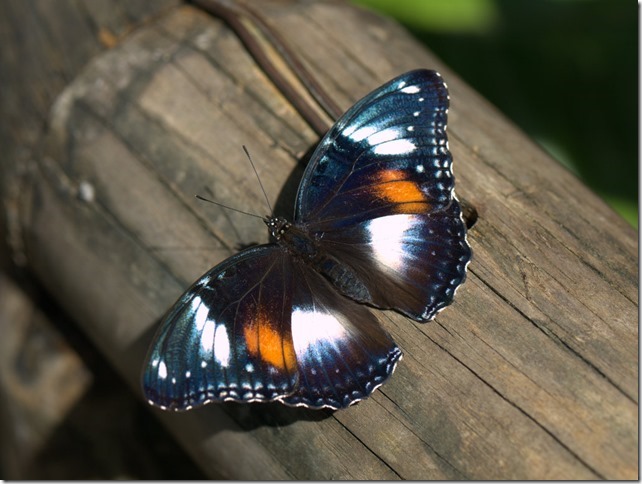 Common Eggfly Hypolimnas bolina, female.
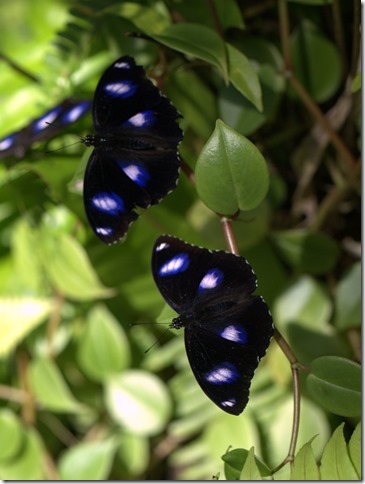 Common Eggfly, male.
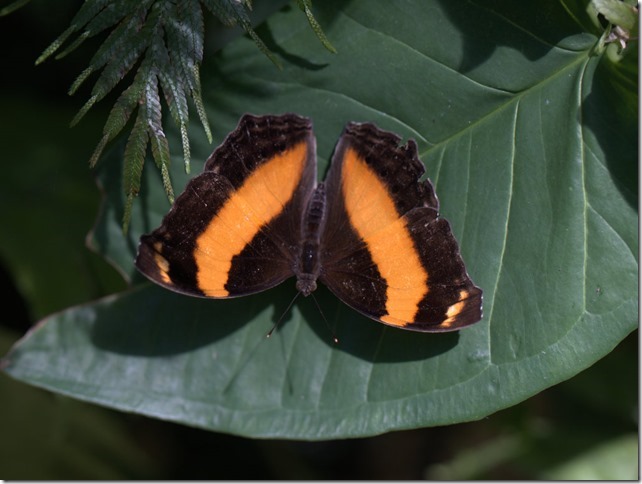 Lurcher Yoma sabina, male.
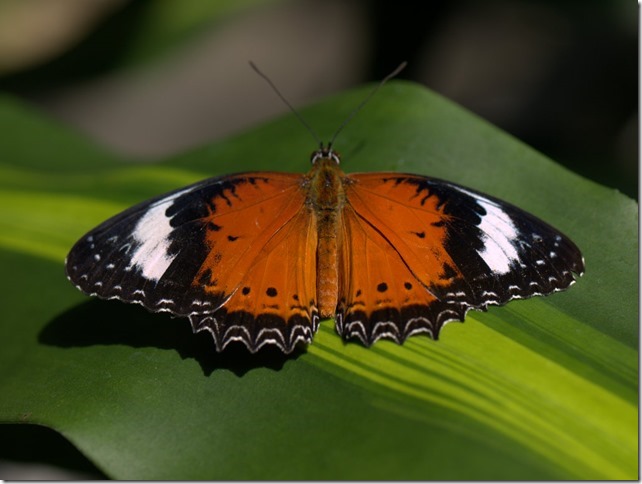 Orange Lacewing Cethosia penthesilea, male
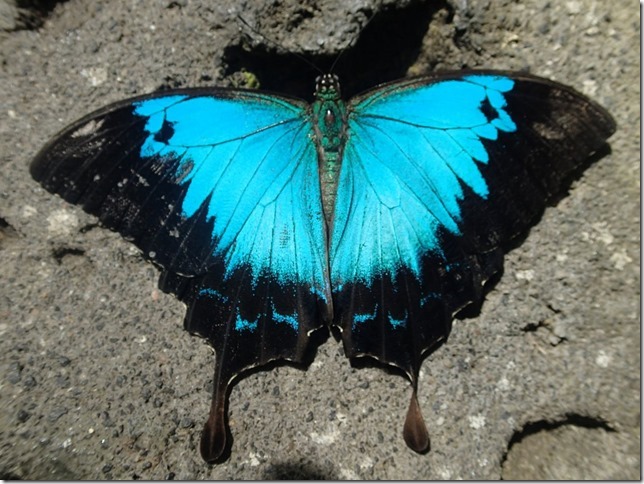 The magnificent iridescent Ulysses Papilio ulysses, female. The
blue colour is entirely structural, each individual scale (see below) having a
complicated multilayered interference system configured to reflect intense blue
light. The black marginal scales have structural properties enabling them to
absorb light, plus melanin pigment, together giving a deep velvety black which
by heightening the contrast enhances the perceived brilliance of the blue.
Simply amazing evolution.
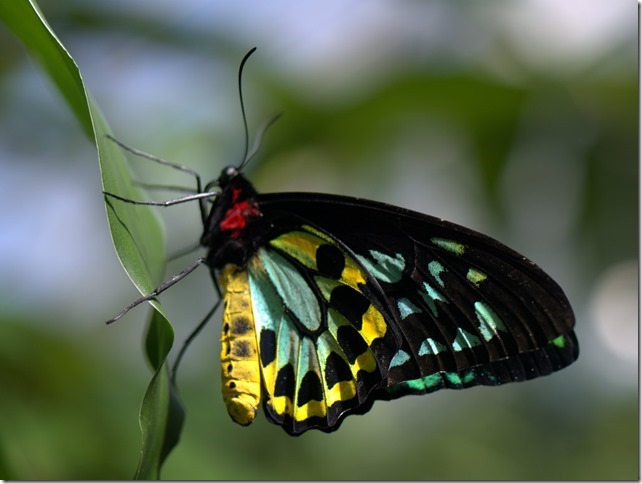 Cairns Birdwing Ornithoptera euphorion, male. These are enormous
butterflies, with a wingspan of 80mm. The upper wings are are bright iridescent
green and black. They feed on nectar from flowers such as hibiscus, and compete
with other nectivores – even sunbirds which they can drive off by flying
aggressively at them – an almost incredible sight.
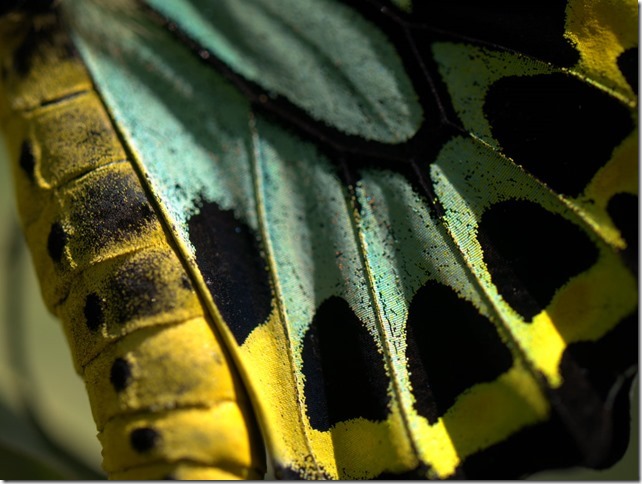 A close-up of the underside of the Birdwing above, showing the mosaic of
individual scales that make up their colour patterns.
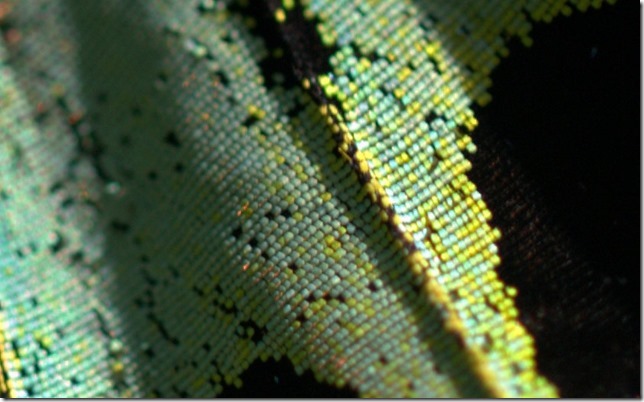 And an even closer close-up. Each scale is a different colour due to an
accumulation of various types of chemical pigments. But blue, as seen in the
Ulysses above is produced in a different way – by the separation of light rays
into their component rainbow colours by physical interference. You can see this
on the surface of a CD, and it’s called ‘structural colour’ because it is not
pigment based. The upper surface of apparently blue scales have a series of very
thin parallel plates each about 0.0004mm thick separated by an airspace of a
similar thickness. Behind this is a dark layer containing melanin. This
structure reflects light very intensely, and depending on the angle of view the
hue changes. This is iridescence, and its evolution in the scales of a
butterfly’s wing is just astounding biology. Well, I think so,
anyway. |